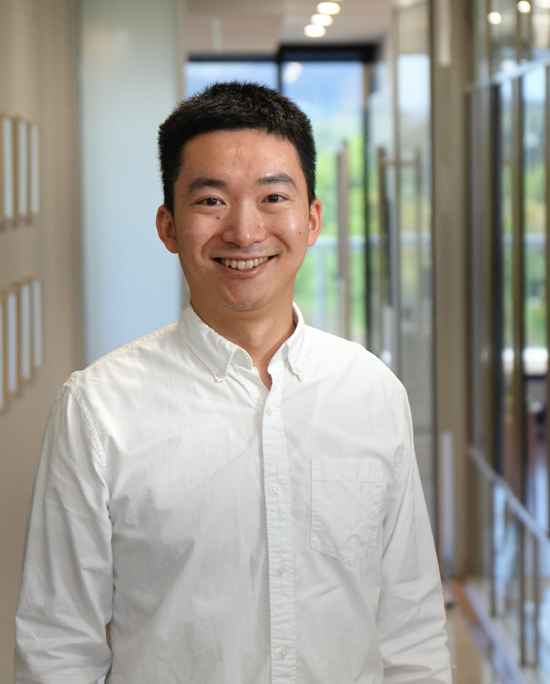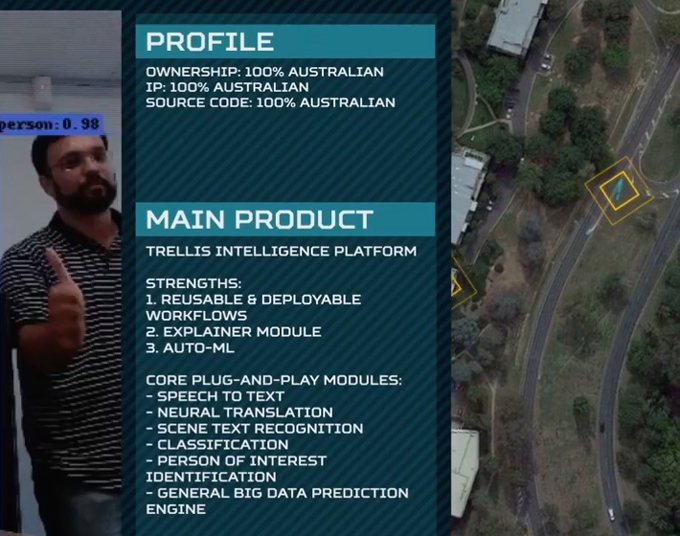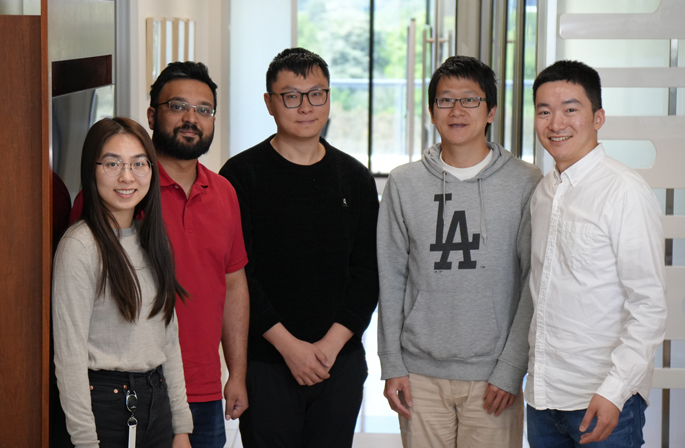A year after earning her bachelor’s degree in Medical Science at the Australian National University (ANU), Andrea Do returned to the lakeside campus as a research technician.
Her role involved analysing genetic sequencing data to identify disease, which was facilitated by bioinformatics: the application of advanced computing technology to biological data. Like most other disciplines, medical science was rapidly evolving into an iterative dance with computer science.
“This is super cool,” she thought. “I want to know more about it.”
The ANU College of Engineering, Computing and Cybernetics (CECC) was a short walk away, just past the Student Centre and the row of restaurants where she would meet up with friends and colleagues.
Andrea enrolled in the Master of Computing program in 2020, opting to continue working as a genetics researcher while she studied. Juggling a full-time job and the degree was demanding, but manageable.
“I woke up at 5 AM every morning for two years,” she said.
The little startup that could
Cheng Yu came to ANU from the United States in 2014 to study a Master of Computing in Artificial Intelligence (AI). His professors at the School of Computing recall him thriving in collaborative environments and as a science communicator.
In early 2018, he landed his first full-time job, with a Canberra tech startup called Trellis Data Group. He was the company’s first employee other than its founders, Michael and Rachel Gately. His title: Head of Research and Development.
Five years later, Trellis Data has more than 30 employees, having rapidly become a leading provider of AI-driven products.

“We have been profitable every year since 2018,” Cheng said. “Most startups survive on investment capital in their early years.”
Trellis Data’s clients include Australian government agencies involved in national security, intelligence, and law enforcement.
It was during Cheng’s second year with the company that Trellis Data spawned ML Labs (the ML stands for machine learning).
“We needed a dedicated research arm doing top-level, deep learning research, with a degree of separation from the parent company to avoid being overly constrained by commercial objectives,” Cheng said.
While Trellis Data manages things like customer delivery and product support, Cheng and ML Labs focus on world-leading research and product development. They publish academic papers and function as a bridge between academia and industry.
Currently, everyone on Cheng’s R&D team is an ANU computing alum like himself, although this was not the intention.
“We snatch up the best and brightest to come out of the ANU,” Cheng said. “They contribute greatly to the core technology of our company.”
Forming a work-integrated learning partnership with the School of Computing at ANU was Cheng’s idea. He saw the ANU Internship Program as a way to give back to his alma mater by offering mentorship and career development opportunities.
“Often with tech industry internships, students are interacting with entry level staff in really large companies,” he said. “At ML Labs, we’re offering them important roles in a small but growing company.”
The ANU Internship Program would provide a talent pipeline to facilitate that growth.
Trellis Data and ML Labs take pride in being Canberra-based. Even as they establish an office in Washington DC, the headquarters and research hub will always remain in Australia’s capital city.
“We believe we haven’t maxed out the local potential yet,” he said. “We don’t need to recruit people to come to Canberra because ANU already attracts the best talent from around the world.”
ML Labs gains a new intern
When Andrea received an email about the School of Computing’s Internship Program, she immediately researched the options available. ML Labs caught her eye.
The Internship Program is designed to help students apply their knowledge and skills to real-world problems and develop the skills and competencies required in industry.
Many students at the School of Computing view the work-integrated learning program as a path to financial independence — a job opportunity straight out of university and a seamless transition from life on the ANU campus to the innovation ecosystem that surrounds it.
But Andrea already had a full time job that she enjoyed. A deeper understanding of advanced computing would enhance her career as a medical researcher, and offer her a glimpse of what her career might be like if she made a change.
When Andrea interviewed for the position, Cheng was on the other end of the telestream.
“I asked him a lot of questions,” she recalled of their first encounter. “I had learnt all of this knowledge at school, but how would I be applying it and putting it into a product?”

Cheng offered an intriguing reply.
He told her that if she came to ML Labs for her internship, she would be working on the Trellis Intelligence Platform, a cloud-based AI-enhanced suite of tools being deployed by the Australian government for top secret criminal proceedings and by large corporations in North America for people-friendly customer service.
Andrea accepted the internship, spending two days a week as part of the ML Labs R&D team. She became an integral part of a fascinating research project in partnership with the Australian Department of Agriculture, Fisheries and Forestry.
Their aim was to protect Australia’s $90 billion agriculture sector by integrating AI into a camera surveillance system capable of scanning incoming shipping containers for hitchhiking pests. The AI model would need to analyse more than a hundred thousand images per day and identify organisms as small as one millimetre in length.

Andrea’s role was to generate training datasets for the AI model so that it could learn to accurately detect unwanted stowaways while filtering out non-threatening objects.
“I found the internship to be very rewarding since I got to apply my machine learning skills to the specific problem of image harmonisation,” Andrea said. “I got to extend research demonstrations into real-world applications.”
She found ample opportunities to immerse herself in data and code, and she valued the interpersonal dynamics as well — being part of a ground-breaking research team that thrived on complex challenges.
“I saw how everyone enjoyed the work environment. People were happy to help me and they genuinely cared about how I was doing. They cared about my development as well as the whole company’s development,” she said.
Part-time intern becomes full-time employee
Cheng offered high praise for Andrea’s performance as an intern.
“Our approach to team building is to look at a person’s cultural fit as well as their technical skills,” he said. “Communication skills, for example, and consideration for other people.”

“Andrea demonstrated that she had a high capability to walk people through complicated science, but she was also confident enough to ask questions.”
When the internship ended, Cheng offered Andrea a full-time position. She joined ML Labs as an AI Engineer in February 2022.
“My current role involves tinkering with machine learning models to be used in a range of different applications,” Andrea said. “It is a natural extension of the work I did as an intern, but at a deeper level with greater ownership and responsibility.”
Andrea now serves as a mentor for two ANU computing students following in her footsteps. Both are fulfilling their work-integrated learning requirements as interns at ML Labs.

